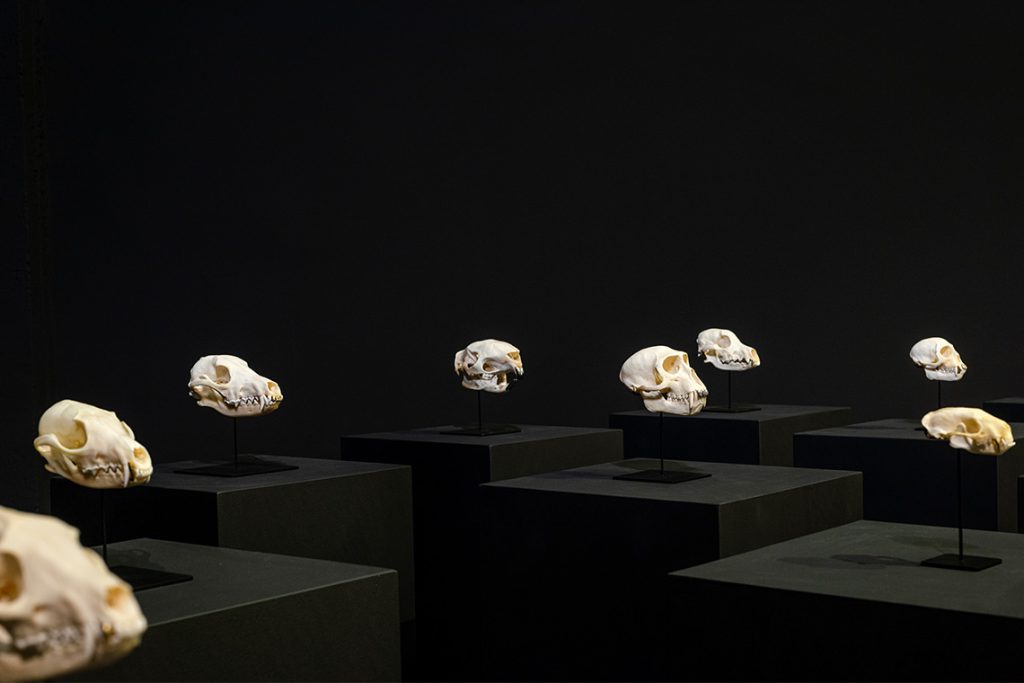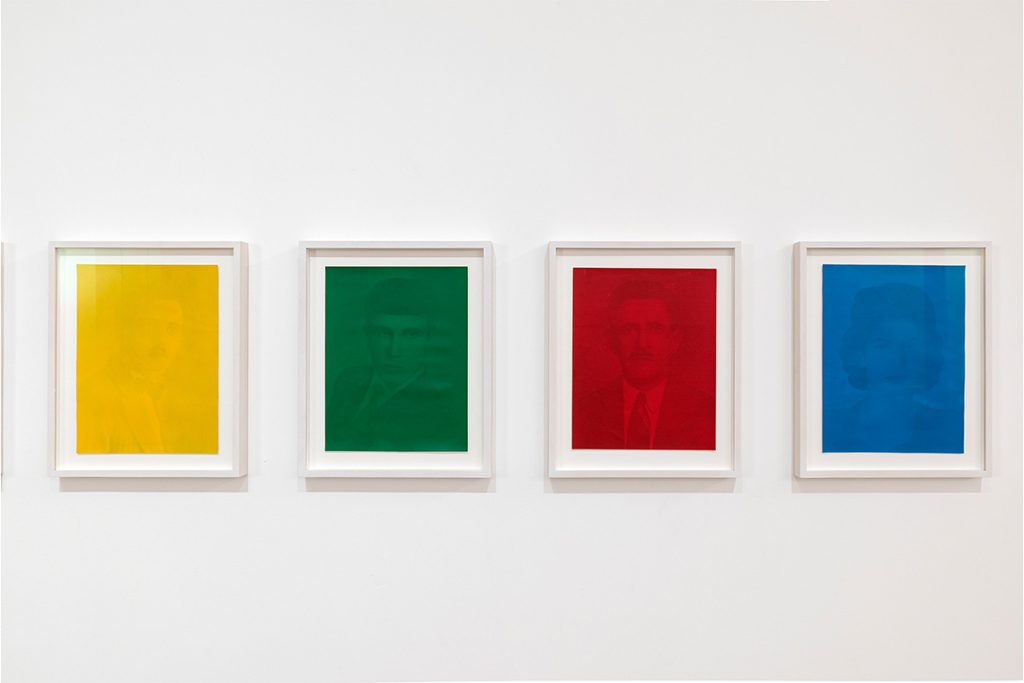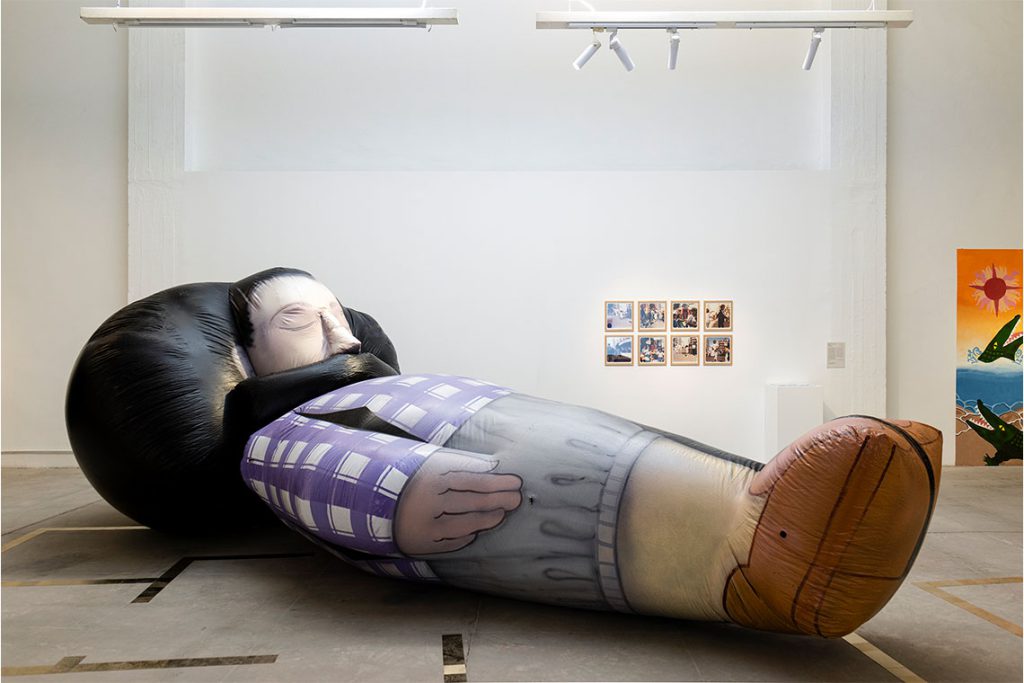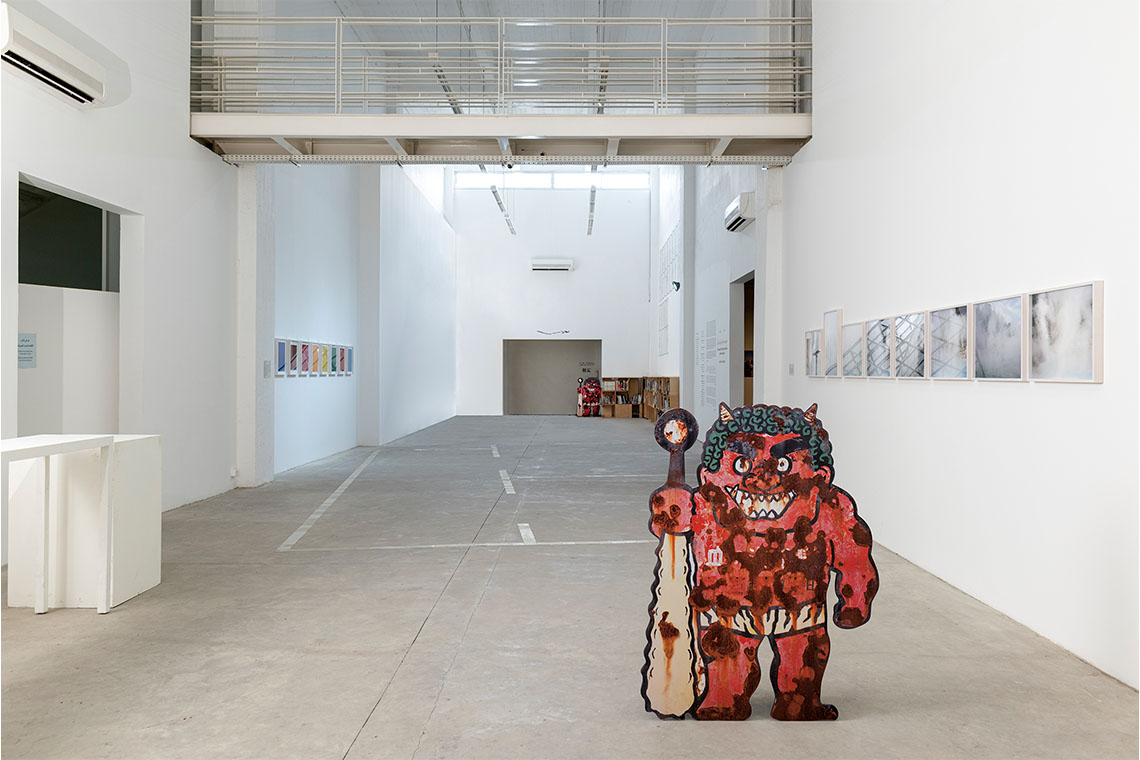Raed Yassin’s solo exhibition Hell Between My Teeth, Phantom in My Heart, and Never-Ending Hum at Beirut Art Center explores themes of mortality and memory through humorous yet thought-provoking reflections on the fragility of life.
Hell Between My Teeth, Phantom in My Heart, and Never-Ending Hum, showing at Beirut Art Center, marks the first seminal exhibition of Raed Yassin in his home country. A departure from his 20-year career examining collective history through the lens of consumer culture and mass production, his new show explores more sombre themes and how people can be connected through emotion.
Presenting 14 bodies of works curated by Reem Shadid – all created over the past four years and including seven new commissions – the exhibition delves into themes of failure, death, loss, memory and disappearance, confronting the spectral presence that permeates both the past and the future, through a variety of media.
Threaded through with his penchant for dark humour and a theatrical edge, Yassin poses existential questions that many people have experienced in life, through recognisable imagery, symbols and pop culture iconography.

“For me, there was a turning point in the way I think and the way I deal with things because of the pandemic,” Yassin tells Canvas. “It was something that affected us all as humans – suddenly, we all had something in common for the first time.
“We could feel what people felt somewhere else, 3000 or 5000 miles away. We were experiencing the same feelings and then that created a kind of collective consciousness, which has been of great interest to me for a long time,” he adds. “My work has always explored general themes related to how humans consume feelings, or things like the collective experience of fear of death – things that we have developed as humans to feel together.”
The increased level of war, natural disasters, violence, fear and instability, both in Beirut and across the world, has forced people to confront new challenges, both socially and physiologically. These tensions are not specifically mentioned in the artworks, but are felt as a unifying background to the whole show.

Yassin seeks to capture how this sense of dissonance has affected us, and has even become normalized as a coping mechanism. “All the crises and failures, the destruction and disappearance of the city that we used to know, are never shown or explicitly mentioned, but all the works are related to the fragility of the world and the chaos that has been passing by,” he says. “As humans, we have experienced floods, tsunamis, death, pandemic, earthquakes etc, not only in Beirut, but everywhere. These things seem to be increasing across the world. Maybe it was always like this, but we were just not exposed to them as we are today.”
The Company of Silver Spectres (2021) is part of a series using found photography collected from flea markets and auctions, with over 1000 photos in the project so far. By adding colour and fading the images slightly, Yassin gives the people a ghostly effect while simultaneously reviving them in the human consciousness.
“It is like bringing back the dead somehow, from memories that are frozen in time,” he explains. What’s different about the ones in the exhibition is that these particular photos are large portraits, A3 size, that people put in their homes to commemorate a family member who has already died,” Yassin says. “You can see these kinds of portraits in many homes in the region, usually in the middle of the salon.”
One of the most curious works in the show is The Theatricality of a Postponed Death (2022), a large inflatable of Lebanese comedian and actor Shushu, an icon from the 1960s and 70s who died in 1975 during the onset of the Lebanese Civil War. The work is both an homage to Shushu and to Raif Karam, Yassin’s former theatre professor at the Lebanese University. In 1984, Karam staged a protest parade against the Civil War, marching through the streets of Beirut. A photo of the parade can be seen behind the inflatable.

“Back then, people couldn’t walk from point A to point B without getting bombed, but Raif somehow invited so many different people, from different political parties as well as scouts and musical bands, artists, puppet makers and actors, all protesting against the war,” he recalls. “One of his favourite characters was Shushu, who was seen as a symbol of the resistance to the war.” Many years later, in 2022, Yassin was invited to a festival in Austria and decided to create a parallel parade. “There were lot of masks depicting the actors that worked with Shushu, and we also had musicians that played Shushu’s music,” he calls.
“The inflatable and the project as a whole is an allegory of Lebanon, something in a coma, suffering, trying to come back to life,” Yassin adds. “The balloon inflates and deflates over time, like it’s breathing – there’s a machine that looks like the respiratory machines used for sick people in hospitals that [inflates the balloon, as though it, and the country, are on life support]”
Hell Between My Teeth, Phantom in My Heart, and Never-Ending Hum balances serious topics with a touch of the bizarre, drawing on Yassin’s theatrical background and narrowing the lines between tragedy and comedy. For the artist, this juxtaposition is “part of life” and offered as a poignant lens through which the audience can consider his works.
Hell Between My Teeth, Phantom in My Heart, and Never-Ending Hum runs until 7 September



